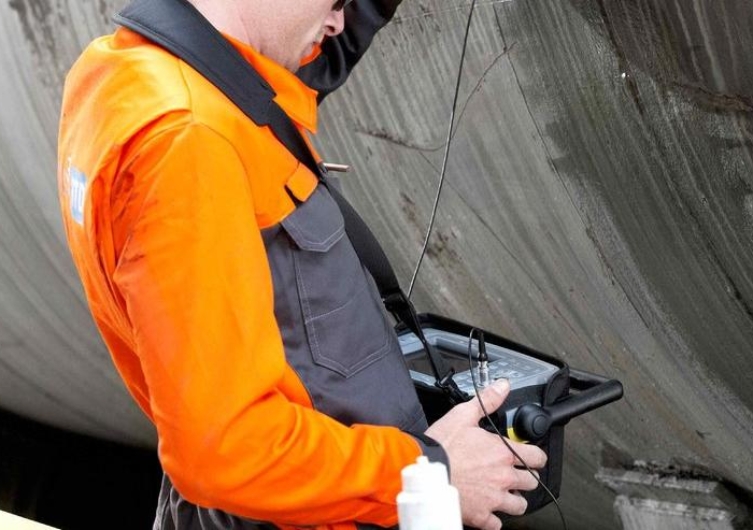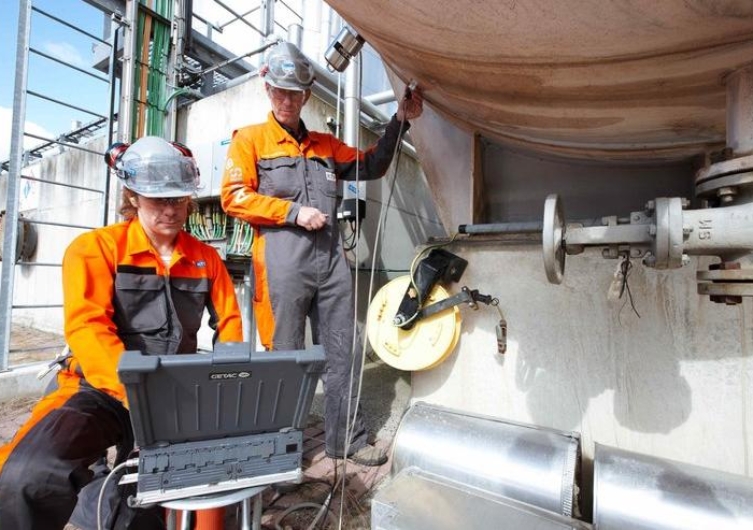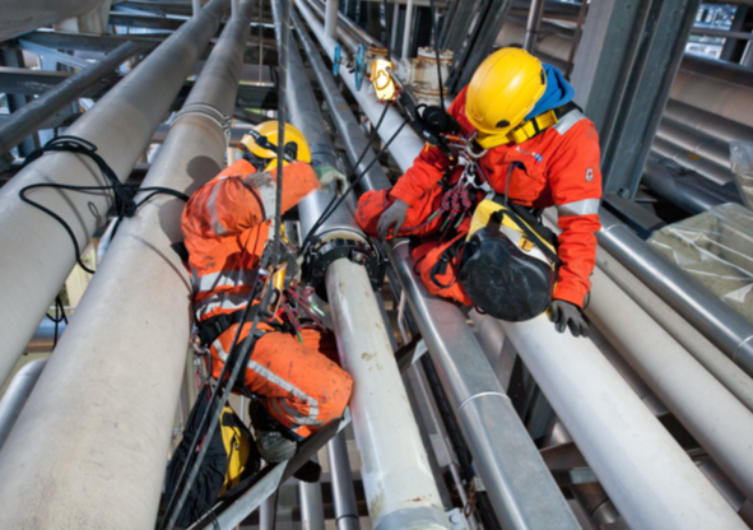Medición manual de espesores por ultrasonidos
La medición manual de espesores por ultrasonidos es una técnica en la que se utiliza energía sonora de alta frecuencia para realizar inspecciones y medir espesores. Consiste en hacer incidir un haz de rayos sobre el objeto que se desea inspeccionar, perpendicularmente a la superficie, y en medir el tiempo que transcurre desde que se emite el rayo hasta que vuelve. Esta información cuantificable puede recopilarse para detectar cambios localizados o generales en el espesor de las paredes.
Medición manual de espesores por ultrasonidos
DESCARGAR VERSIÓN EN PDFInspección por ultrasonidos con ondas de cizalla
Inspección por ultrasonidos con ondas de cizalla
DESCARGAR VERSIÓN EN PDFInspección con ultrasonidos por ondas guiadas
La inspección por ultrasonidos con ondas guiadas ha sido identificada como una tecnología eficaz para el cribado de tuberías, capaz de detectar, localizar y clasificar defectos por corrosión. Esta técnica permite una inspección volumétrica de las tuberías, cubriendo el 100 % del área de la sección transversal dentro de la longitud diagnóstica de la prueba. En la mayoría de los casos, es posible inspeccionar decenas de metros desde una única posición de prueba, lo que la convierte en un método de ensayo no destructivo (END) rápido y rentable. Además, solo se requiere acceso a la tubería en el punto de prueba (inspección remota), lo que hace que la tecnología de cribado mediante ondas guiadas sea una solución ideal para inspeccionar tuberías cuyo acceso con otros métodos resulta costoso, como los tramos enterrados en cruces de carreteras o las tuberías aisladas.
El sistema de cribado de tuberías Wavemaker es un método de inspección que utiliza ultrasonidos. Se coloca un anillo de sondas alrededor de la tubería que transmite ondas guiadas a lo largo de esta en ambas direcciones desde el anillo. El funcionamiento de tipo pulso-eco proporciona información sobre características y/o distintos tipos de defectos, indicando su posición y gravedad. La inspección con ondas guiadas puede realizarse como una prueba puntual o repetirse desde la misma ubicación, lo que permite su uso con fines de monitorización (gPIMS® Monitoring).


